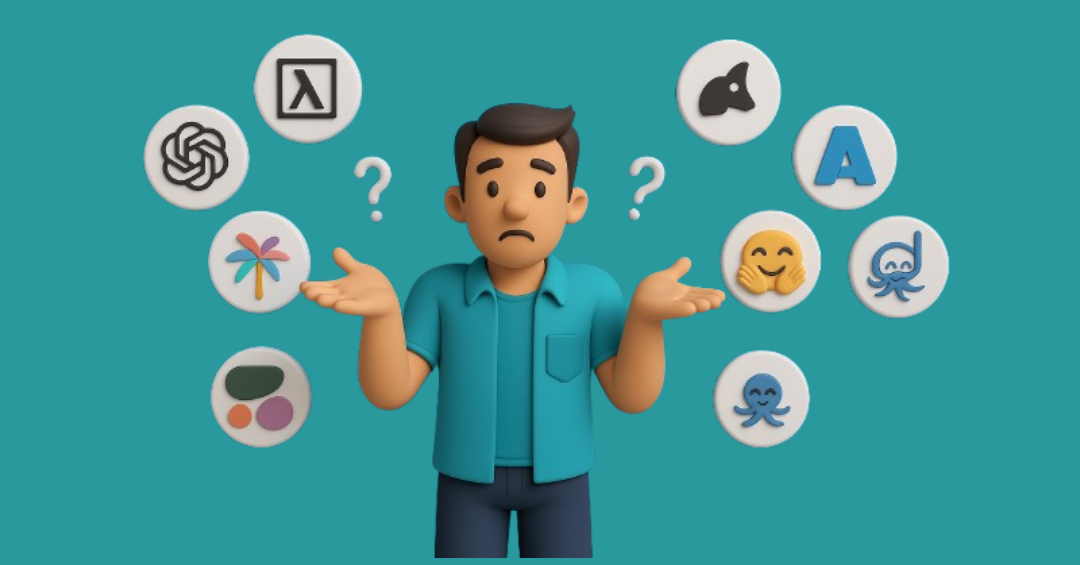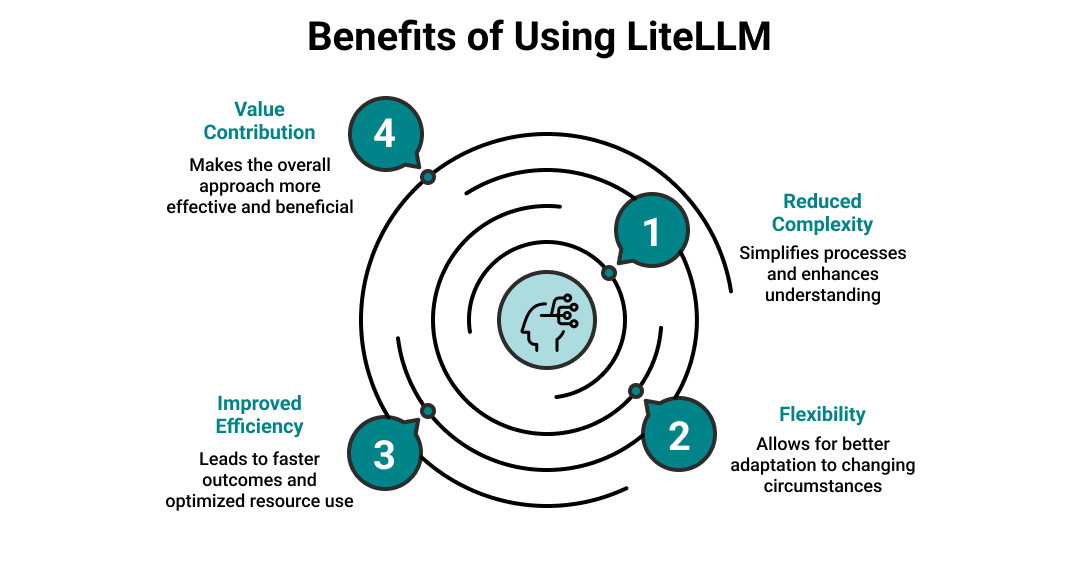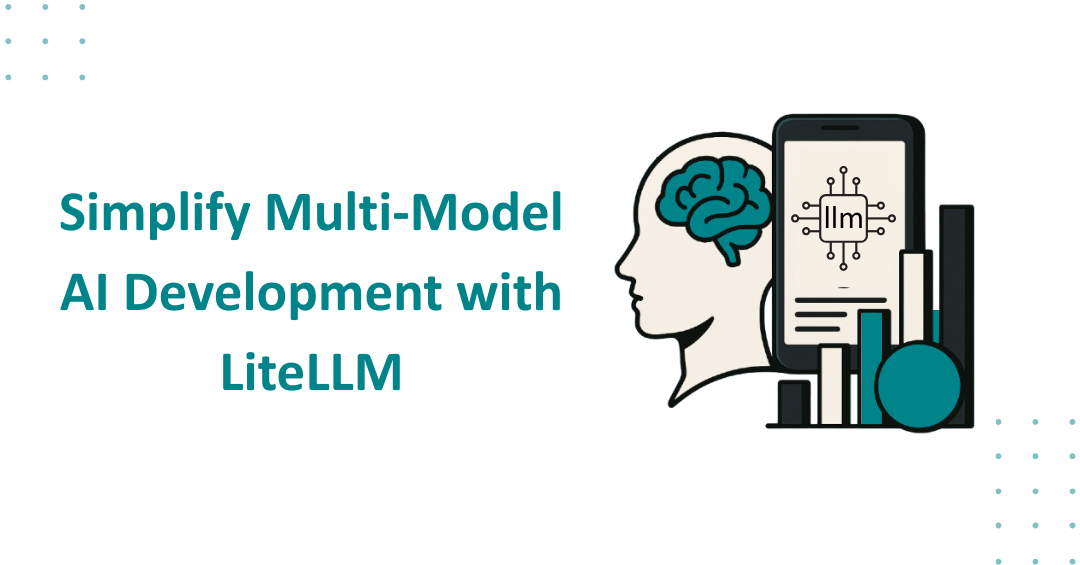
Ever find yourself lost in the complexity of multiple LLMs? How can LiteLLM bring clarity? Whether you're just starting out or already exploring advanced use cases, this LiteLLM tutorial will walk you through the key features and benefits in practice.
What is LiteLLM?
LiteLLM, which stands for "Lightweight Large Language Model Library," simplifies the use of advanced AI models. As a lightweight LLM interface and Python LLM SDK, it provides developers with a simple and efficient way to integrate multiple models. Think of it as a versatile LLM gateway that acts as a bridge to various state-of-the-art AI models. With LiteLLM, you can effortlessly tap into the capabilities of different AI models, regardless of their provider.
It serves as a unified interface, streamlining your interactions with these intelligent systems for tasks such as writing, comprehension, image creation, and building robust LLM workflows. LiteLLM collaborates with renowned providers like OpenAI, Azure, Cohere, and Hugging Face, offering a seamless experience in leveraging AI for your projects.
Now, let's delve into the features and benefits that LiteLLM brings to the table:
Key Features
LiteLLM provides key features to simplify working with complex AI models:
- Multiple LLM providers: You can easily interface with multiple providers (Hugging Face, Cohere, Azure, OpenAI, etc.) to offer flexible access to a variety of model capabilities.
- Unified API: The use of a single call structure means less learning effort and increased speed and productivity to call LLMs from multiple providers.
- Consistent output: You receive text responses in a uniform format, which allows easy processing or combining results from LLMs from multiple providers.
- Error management and retries: Error management and retries: LiteLLM has an automatic error management and retry process that will keep your workflows flowing. It also contributes to LLM observability, helping teams monitor model behavior, latency, and failure cases across providers for better operational transparency. If one provider cannot maintain proper robustness, you can transfer your request to another one.
- Streaming support: Resource utilization and performance are optimized by streaming LLM outputs in easily manageable “chunks”, increasing efficiency in memory-intensive scenarios.
- LLM load balancing: LiteLLM supports intelligent LLM load balancing by distributing requests across different providers or models. This ensures optimized performance, higher availability, and resilience when one model becomes unresponsive or exceeds usage limits.
- Open-source and community-driven: As a community-backed LLM library, LiteLLM ensures transparency and continual development, delivering dependability, creativity, and community support.
LiteLLM offers numerous advantages that streamline your AI model interaction. By functioning as a lightweight LLM layer, it ensures minimal overhead and quick integration across diverse providers, enabling smooth and scalable LLM workflows, including real-time applications using streaming LLM responses:
- Reduced complexity: Identify your task, it's easier to focus on the features of different supplier APIs, and you will gain usability and buy productivity.
- More flexibility: Test out different LLMs until you find the one that meets your needs. This gives you customisation and flexibility.
- Improved efficiency - LiteLLM delivers increased productivity and workflow efficiencies through uniformity in coding and automatic error management; in addition, it saves you time and effort.
- Value: Maximise the value of your investment in AI technology, which includes considering the structured pricing from different suppliers.
Perfect for Developers, Startups, and Enterprises
Whether you're an individual developer experimenting with models, a startup reducing AI costs, or an enterprise deploying a mission-critical solution at scale, LiteLLM provides maximum flexibility. As an LLM library designed to be provider-agnostic, it not only mitigates vendor lock-in or dependency but fundamentally enables you to change models, save money, and rapidly grow or innovate without changing your code. At its simplest, LiteLLM is a universal layer to facilitate experimentation, production systems, and optimized LLM workflows without disruption.
Things to Consider
When using LiteLLM, keep these factors in mind to optimize your experience:
- Individual API Keys - Remember that there's no single "LiteLLM key"; you'll require individual API keys from each LLM provider you utilize, ensuring secure and seamless integration.
- Pick the best provider: Selecting the right supplier is vital. You will want to consider other factors, such as model availability, accuracy, budget, and use case, to ensure you have the correct best supplier and to enhance speed and efficiency.
- Technical knowledge: Although LiteLLM aims for ease of use, if you know what LLMs and APIs are capable of, it will help you be more efficient, and also help you determine defensible decisions when things do not work. This awareness also empowers you to implement LLM guardrails effectively, setting boundaries for model behavior, output limits, and use case compliance.
Each LLM provider has its specific authentication mechanism and key type. Therefore, the key you need depends entirely on which LLM provider you're using with LiteLLM.
Provider | Key Type |
Cohere | Cohere API Key |
OpenAI | OpenAPI Key |
Azure | Azure Cognitive Services resource Key |
Hugging Face | Hugging Face Hub API Token |
Anthropic | Anthropic API Key |
Ollama | Ollama API Key |
SageMaker | AWS IAM credentials |
Replicate | Replicate API Key |
Comparison of Key Features among Popular LLM Providers
Provider | Strengths | Weaknesses | Pricing |
Cohere
| Strong text generation, user-friendly | Limited model selection, higher cost per API call | Pay-as-you-go and subscription plans |
OpenAI
| High accuracy, advanced models
| Limited free tier, can be expensive for high usage | Pay-as-you-go and a limited free tier
|
Azure
| Wide model selection integrates with other Azure services | A complex pricing structure can be costly
| Pay-as-you-go and subscription plans
|
Hugging Face
| Open-source community, diverse models
| Requires technical expertise, limited support | Free for community models, paid plans for enterprise options |
Anthropic
| High accuracy and performance | Limited model availability, closed access
| Closed access, pricing information not publicly available. |
LiteLLM supports multiple LLM providers
LiteLLM demonstrates its versatility by seamlessly working with various LLM providers, offering users a flexible and comprehensive language modeling experience.
The following LiteLLM tutorial examples show how to connect with different providers step by step using environment variables and a unified completion() call. These LiteLLM examples also demonstrate how a Python LLM SDK like LiteLLM abstracts the complexity of dealing with different APIs into a single, unified interface.
from litellm import completion
import os
## set ENV variables
os.environ["OPENAI_API_KEY"] = "openai_api_key"
os.environ["COHERE_API_KEY"] = "cohere_api_key"
os.environ["HUGGINGFACE_API_KEY"] = "huggingface_api_key"
os.environ["ANTHROPIC_API_KEY"] = "anthropic_api-key"
os.environ["REPLICATE_API_KEY"] = "replicate key"
os.environ["AWS_ACCESS_KEY_ID"] = ""
os.environ["AWS_SECRET_ACCESS_KEY"] = ""
os.environ["AWS_REGION_NAME"] = ""
os.environ["AZURE_API_KEY"] = ""
os.environ["AZURE_API_BASE"] = ""
os.environ["AZURE_API_VERSION"] = ""
messages =[{"content":"Capital of Australia?", "role":"user"}]
# openai call
response = completion(model="gpt-3.5-turbo", messages=messages)
print('response of openai -',response["choices"][0]['message']['content'])
# cohere call
response = completion("command-nightly", messages)
print('response of cohere - ',response['choices'][0]['message']['content'])
# hugging face call
response = completion(
model="huggingface/WizardLM/WizardCoder-Python-34B-V1.0",
messages=messages,
api_base="https://my-endpoint.huggingface.cloud"
)
print(response)
# Ollama call
response = completion(
model="ollama/llama2",
messages=messages,
api_base="http://localhost:11434")
print(response)
# Anthropic call
response = completion(model="claude-instant-1", messages=messages)
print(response)
# replicate call
response = completion(
model="replicate/llama-2-70b-chat:2796ee9483c3fd7aa2e171d38f4ca12251a30609463dcfd4cd76703f22e96cdf",
messages = messages)
print(response)
# Aws Sagemaker call
response = completion( model="sagemaker/jumpstart-dft-meta-textgeneration-llama-2-7b",
messages=messages,
temperature=0.2,
max_tokens=80)
print(response)
# Azure call
response = completion(
model = "azure/undefinedyour_deployment_nameundefined",
messages = messages)
print(response)These LiteLLM examples serve as a foundation for scaling real-world applications by abstracting away the differences in APIs, helping you focus on business logic instead of provider-specific code.
The Importance of LiteLLM in Reality
If you're creating a chatbot with AI capabilities, a content generation engine, or a personalized recommendation mechanism, LiteLLM makes using multiple models extraordinarily simple. Instead of needing to assume all the complexity of each provider and write new code for each, developers can focus on working on business problems, while LiteLLM serves as an LLM gateway, handling the complexity in the back end. This reduces development cycles and enables the team to A/B test between LLMs as easily as pressing a button, greatly enhancing the efficiency of your LLM workflows. It also enhances LLM observability, allowing developers and businesses to track model usage, detect anomalies, and optimize performance across different providers. With LiteLLM, you can also establish LLM guardrails to maintain control over response quality, restrict unsafe outputs, and ensure alignment with business or compliance standards.
End Note
In the end, LiteLLM is a convenient solution to eliminate the friction that comes with using multiple undefineda class="code-link" href="https://www.seaflux.tech/blogs/llm-local-system-guidebook" target="_blank"undefinedlanguage models(LLMs)undefined/aundefined. LiteLLM is cross-compatible with all interfaces and provides essential features to facilitate your access to a leading AI featured by all providers, comprising OpenAI, Azure, Cohere, Hugging Face, and Anthropic.
LiteLLM helps to minimize the challenges of working with AI models while providing the flexibility and productivity to realize their full potential. With the LiteLLM adapter, the user can access all of the features of LLMs without learning to navigate each model-specific API, allowing the user to learn on task and innovate in different fields.
Need Custom LLM or AI Solutions? Let Seaflux Build It for You
At Seaflux, we’re more than just AI undefined Machine Learning enthusiasts; we’re a undefineda class="code-link" href="https://www.seaflux.tech/custom-software-development" target="_blank"undefinedcustom software development companyundefined/aundefined dedicated to building real-world solutions. Whether you're looking for custom AI solutions, a reliable undefineda class="code-link" href="https://www.seaflux.tech/ai-machine-learning-development-services" target="_blank"undefinedAI solutions providerundefined/aundefined, or need help implementing LLM solutions for your unique use case, we’ve got you covered.
From building intelligent workflows to creating custom LLM applications or deploying undefineda class="code-link" href="https://www.seaflux.tech/ai-machine-learning-development-services/conversational-ai" target="_blank"undefinedconversational AI solutionsundefined/aundefined, our team specializes in making advanced AI accessible, scalable, and aligned with your business goals.
Got a project in mind or exploring ways to integrate LiteLLM into your systems? undefineda class="code-link" href="https://calendly.com/seaflux/meeting?month=2024-02" target="_blank"undefinedSchedule a meetingundefined/aundefined with us here, and let's explore how we can bring your vision to life.

Jay Mehta
Director of Engineering









